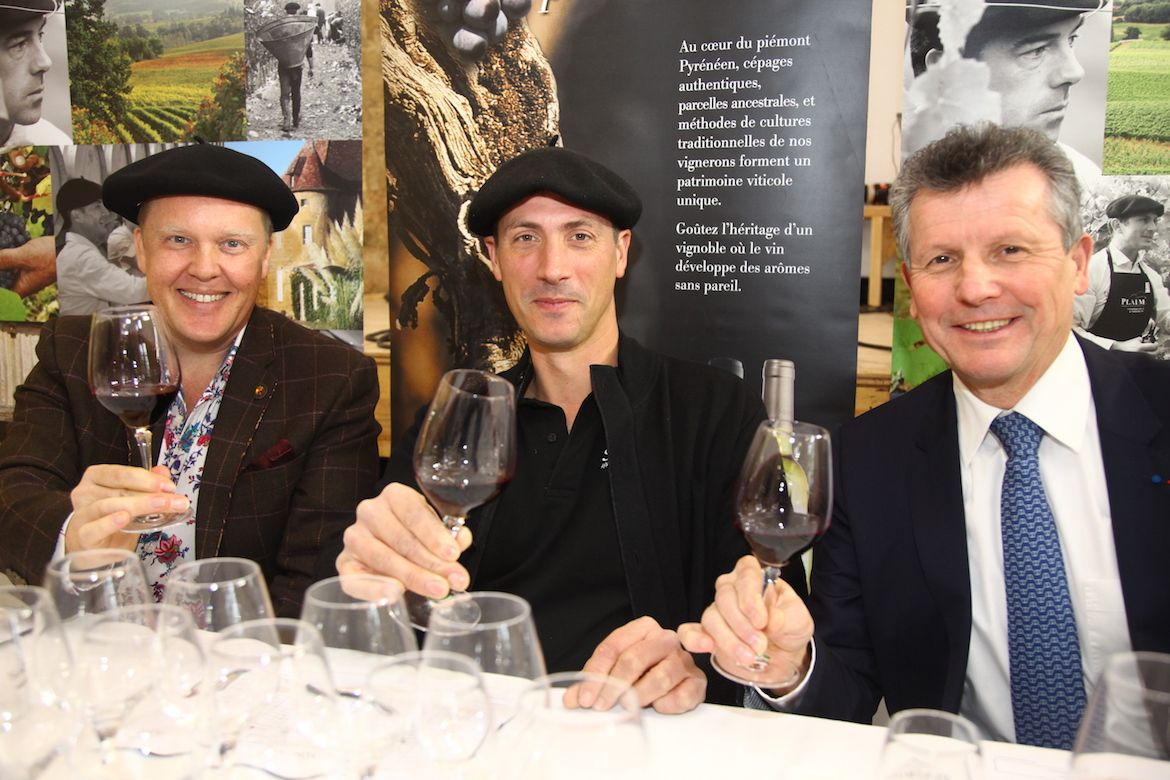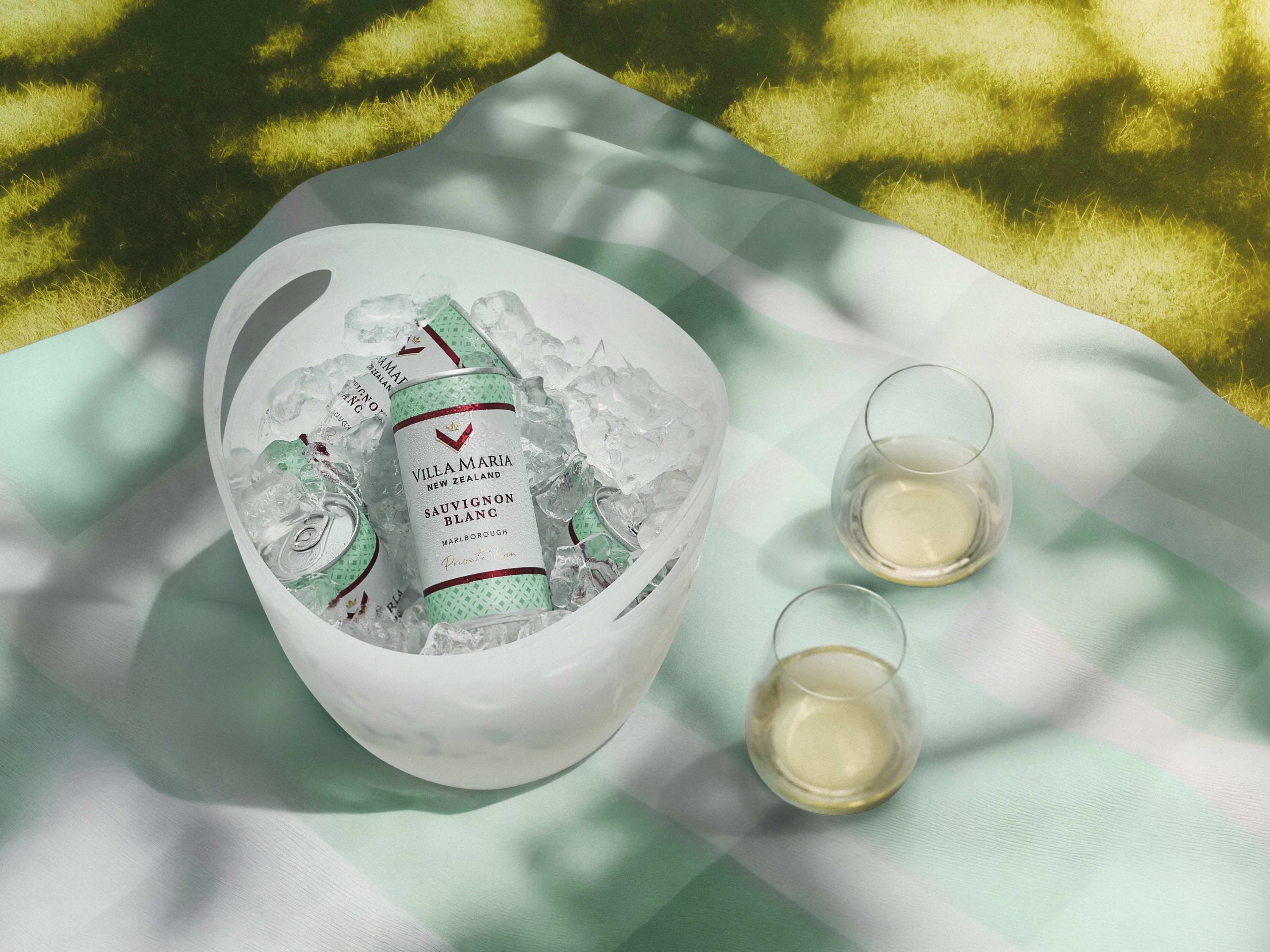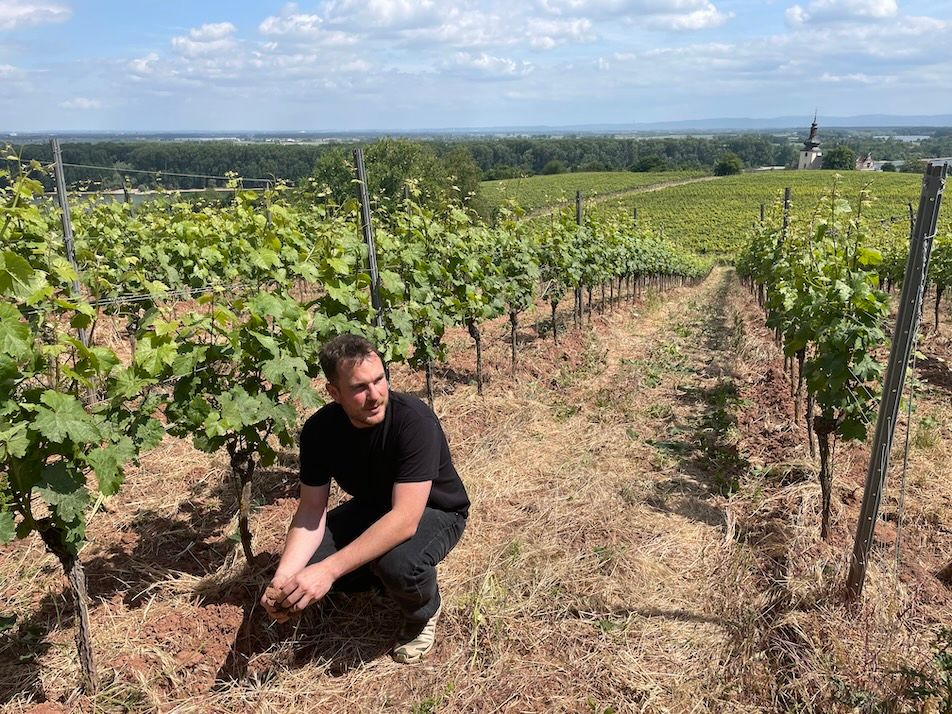Le Faîte is the most visible expression of what Plaimont Producteurs are doing in Gascogny – entirely rejuvenating the region, replanting and reintroducing long-lost grape varieties (Manseng Noir, Pinenc etc.) as well as supporting local growers. Olly Smith and Giles James explain the blending process.

Every vintage of Le Faîte is a unique blend of the best expressions of AOC Saint Mont terroirs. Every cuvée is produced in a limited quantity, with only 20,000 bottles of Le Faîte red and 15,000 of Le Faîte blanc. They are available to the UK on-trade and independents through Corney & Barrow, Adnams Cellar and Kitchen, Bordeaux & Beyond and Portland Wine.
The white 2016 is a blend of Gros Manseng, Petit Courbu and Arrufiac. The red 2015 is a blend of Tannat, Pinenc and Cabernet Sauvignon. Both are from AOC Saint Mont.
Olly Smith
How did you first come into contact with the wines of Plaimont Producteurs?
Through my Bon Viveur range of wines (exclusive to P&O Cruises) which was an absolute delight and a fantastic chance to get to know the growers and grapes more closely. Over the years, the wines of Plaimont Producteurs have always stood out at tastings with their high impact character, authenticity and incredible value for money.
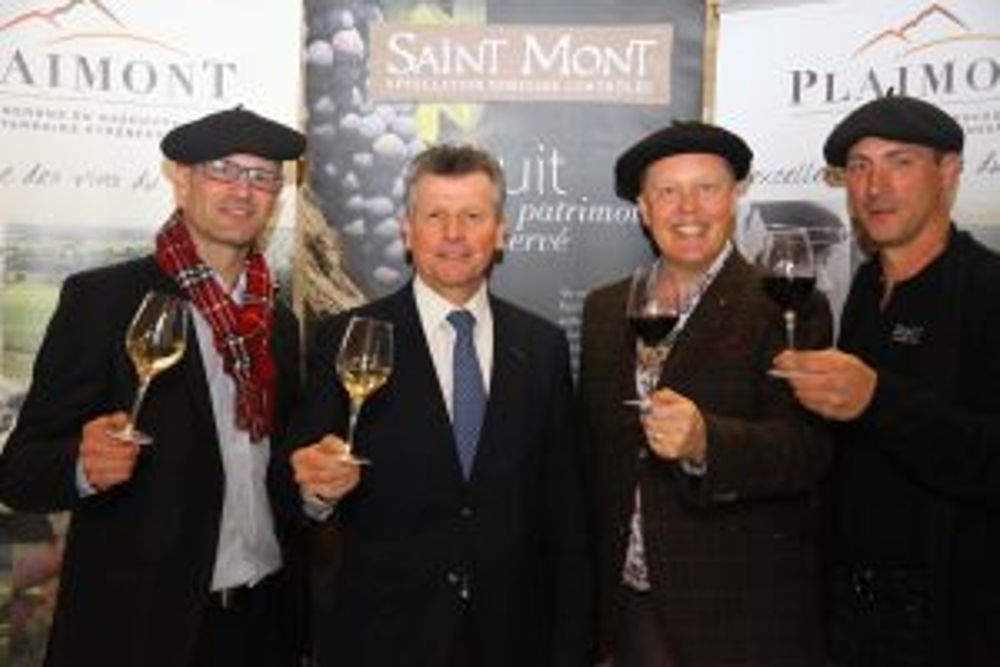
The new Beret Bros! – (l-r) Olivier Bourdet Pees, Serge Dubs, Olly Smith, Eric Fitan
What was the highlight of the blending of Le Faîte for you? Do you have a particular interest in a specific part of the blending process?
The co-op is such a place of togetherness and when I was presented with my very own black beret, which every grower wears, it felt truly emblematic, like I’d been welcomed to the very heart of the Plaimont family.
Many hands guiding ancient vineyards and new cuttings towards a united vision is utterly compelling and the blending itself, teasing out the most truthful sense of balance between structure, flavour and deliciousness is crucial to underpinning these wines which are traditionally built to endure, age and evolve.
We could have made a wine to drink today which would have tasted immense, but in the event we prioritised both white and red to live beyond immediacy and reveal the secrets of the landscape and tradition as the years unfold. These are wines that I’m proud to say will continue to thrill for years to come.
What do you think of the varietals used in the blending, and the terroir of the region?
The heart of the region is its people and their cracking range of local grape varieties reflect their vitality, distinctive character and endurance.
Depending on where the grapes are grown, they offer different strengths to a blend.
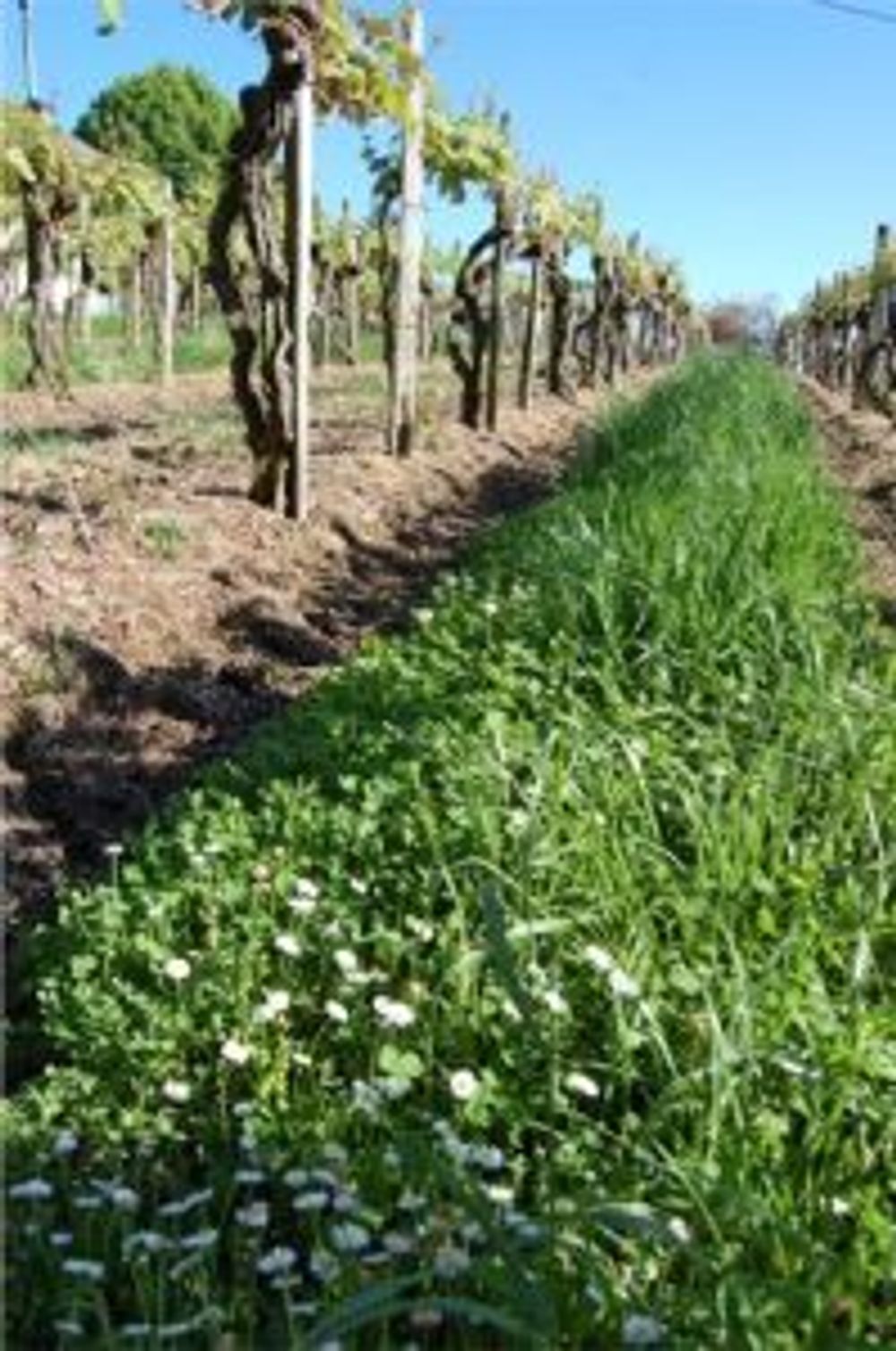
Clay, sand, chalk and all their various permutations, coupled with varying percentages of grape varieties, create a matrix of limitless potential in this region.
The sense of history and contemporary dedication to improvement deserves far greater acclaim: pre-phylloxera vines more than a century old saved as a historic national monument; hitherto unknown varieties with unique characteristics such as natural lower alcohol of around 10% that could be game changers in the face of climate change; and community outreach to the local school children to bring the next generation into the world of wine.
Standing in the vineyards learning to prune, with the pale ribbon of the Pyrenees shining in the middle-distance, it struck me how much this is a place of hard work, shared knowledge and social co-operation. To preserve the traditions of wine here is one thing, determination to inspire the next generation of wine growers to move forward is why Plaimont truly shines.
What would be the ideal food pairing for each final Le Faîte blend, in your opinion?

To be completely truthful it depends when you open them. In youth the red will be superb from release with, say rib of beef thanks to its grippy structure. As it ages, I’d move more towards the softer textures of slow-cooked lamb.
The white in youth with its tropical verve is delicious as an aperitif but as it ages it will unfurl generosity of texture to work with richer fish dishes and even lemon-infused roast chicken.
But for me, the ultimate way to enjoy these wines will be wearing my beret and raising my glass to the people of the co-operative and the spark lit by André Dubosc which continues to illuminate Plaimont’s hard-earned bright future.
Consultant buyer for Noble Inns, Giles James

How did you first come into contact with the wines of Plaimont Producteurs?
It goes back some years!
Noble Inns is owned by Scott and Maria Hunter. I met them at the Princess of Shoreditch back in 2007, when I was working for Corney & Barrow, selling into the on-trade. I had the opportunity to take customers out to Plaimont, so Scott, Maria and I went out to visit the region and experience the jazz festival in Marciac.
This was when the seismic shift really happened for Scott, Maria and I. It became apparent that Plaimont was far more than just a cooperative. They operate on a much broader scale: they have been entirely rejuvenating the region, replanting and reintroducing long-lost grape varieties (Manseng Noir, Pinenc etc.), as well as supporting so many local growers.
It was a real perception shift for us, so we decided to cite wines from Plaimont Producteurs across our entire list. Plaimont is the only wine company we do this with! It’s even written about in our staff handbooks.
Which wines do you list, and what are your thoughts on their positioning?
Our house white, the Les Lesc Blanc Producteurs Plaimont 2015, IGP Côtes de Gascogne, and the dessert wine, the Saint Albert Pacherenc du Vic-Bilh Producteurs 2011, and Pacherenc du Vic-Bilh Sec La Folie de Roi 2013.

We are also about to list both Le Faîte Blanc and Le Faîte Rouge (as top tier wines).
This is interesting as it means we will have something at every price point.
Gascony’s wines represent absolutely excellent value for money. On a list, Bordeaux would be tens of pounds more expensive: it represents a significant difference. We are exploring potential options for older vintages with Corney & Barrow too – the wines’ potential for ageing is immense.
Gascony is gaining more recognition in the wine trade for its wines. Do your customers recognise this?
Not yet – we need to work on this and develop it.
With house wine it is always difficult because the wine tends to be chosen for its price point, however with Le Faîte on our list, a wine that is striking and individual, this should strike a chord with our customers, and will create a real opportunity for us to engage with them and make the link with Plaimont Producteurs and thus, Gascony.
So, what would you pair with Le Faîte?
They’re such versatile wines, there are lots of options. The red will do particularly well at our Smokehouses I think, with slow roasted, succulent red meats.
The white will be an excellent pairing for more spicy dishes – we use kimchi and sriracha – which the fruit, acid and weight of the wine will balance very well. The white will also match perfectly with our traditional pub menus, with pork belly for example.
Plaimont resonates with our way of thinking, our restaurants/pubs buy whole animals and we butcher the animal ourselves; in particular we use suppliers with rare breeds that we want to support and see the continuation of. This resonates with what Plaimont Producteurs are doing for indigenous grape varieties.
You have recently come back from a visit to the region to blend the 2015 Le Faîte wines. What was the highlight for you?
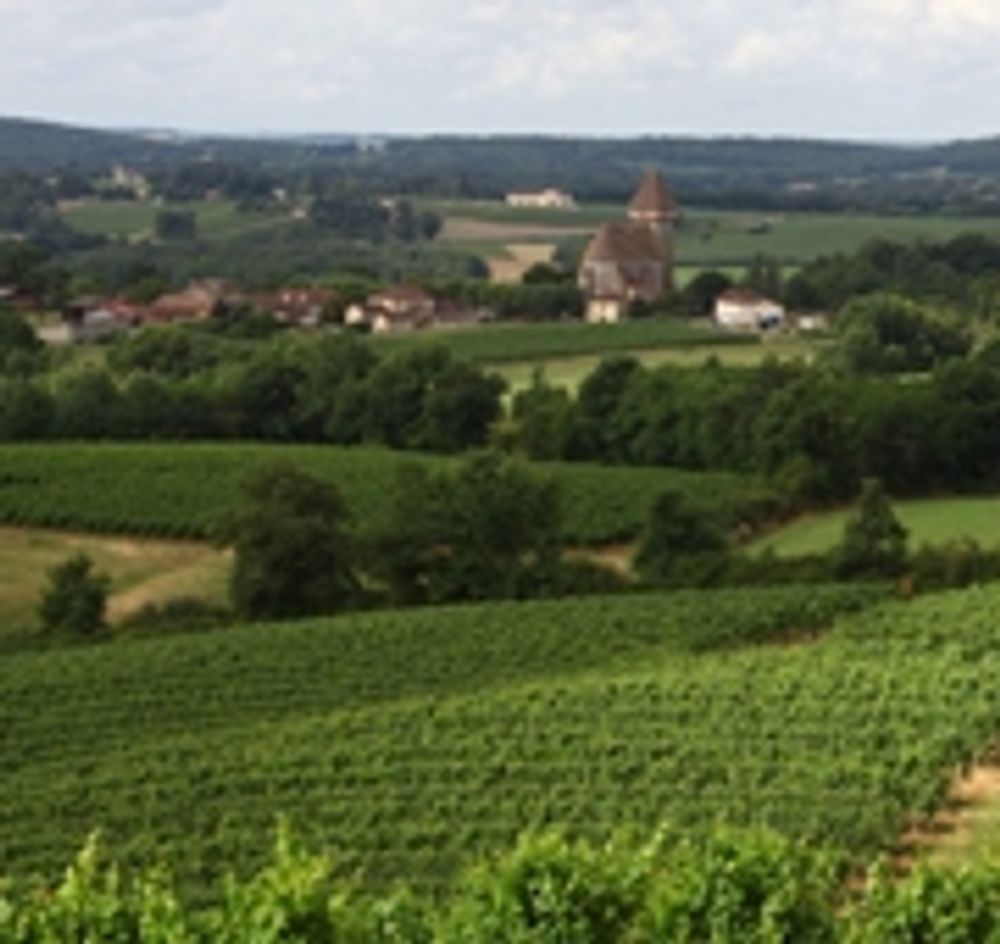
Doing this activity is so interesting, nobody at Plaimont is resting on their laurels, and it most certainly isn’t a marketing ploy: it is an informed tasting exercise to define the future of that cuvée.
Choosing the final blended wine was fascinating – 2015 was a great vintage so the winemakers were in a fortunate position where every wine could have been a great choice.
The white that was chosen was compelling – it was hidden and fairly closed at the beginning, but had such a hidden depth that kept bringing us back. It had the impression of a ‘sleeping giant’ wine, a wine with real potential for ageing.
I also really enjoyed visiting the micro-winery where Nadine Raymond (technical coordinator of research and development) is making all of her experimental microvinifications. The wines to watch for the future…
